#Kanako Shirasaki
Photo

LucasFilm has unveiled the key art of "Screecher's Reach" from Director Paul Young & Cartoon Saloon
This is Disney's & Cartoon Saloon third collab with Disney TVA’s "The World According To Winnie The Pooh" pilot and Disney Europe Animation's "Vikingskool".
Star Wars: Visions Volume 2, arriving May 4 on Disney+.
#Star Wars#Star Wars Visions#Paul Young#Cartoon Saloon#Jacqui Lopez#James Waugh#Josh Rimes#Justin Leach#Kanako Shirasaki#George Lucas#Lucasfilm#LucasFilm Animation#Lucasfilm Entertaiment#Lucasfilm Ltd#Disney+#Disney Plus#Disney+ Originals#Disney Plus Originals#Disney+ Original Animated Series#Disney Plus Original Animated Series
201 notes
·
View notes
Text
Star wars anime

#STAR WARS ANIME SERIES#
#STAR WARS ANIME SERIES#
The series showcases nine original stories. Executive producer James Waugh brought his love of anime into the Star Wars universe with the Disney+ animated anthology series Star Wars: Visions. "I think there's a real presumption, a lay presumption that a lot of anime is just action and bombast, the truth is, it's so much more nuanced and there's so many different degrees of it and as fans we wanted to make sure the symbology really spoke to that and really showcased that. The Star Wars universe gets the anime treatment in the first trailer for the animated anthology series Star Wars: Visions on Disney Plus. "From the start we wanted to make sure that each one of these films showcased the diversity, tone and texture that is found in anime as a medium," Waugh said. And on Tuesday, August 17, the studio revealed new details in a press release. In most Japanese stories, it's about families or the people around you. Lucasfilm first announced that an anime anthology series titled Star Wars: Visions was being made in December 2020. "The Star Wars is a story about a family, and a father and son relationship," said Kanako Shirasaki, producer. Star Wars has a universal resonance these days. Disney+ Executive producer James Waugh brought his love of anime into the Star Wars universe with the Disney+ animated anthology series Star Wars: Visions. Not an ewok or a Wookie but an earth-bound intruder. "We very quickly realized we could look at Star Wars stories in a completely different way than we ever had before and try and experiment with new things," he added. Star Wars has always done a great job at merchandising and this is another vehicle and avenue to showcase Star Wars. If they can refine a good Japanese Anime team, there is vast potential and, let’s be honest, this is a GREAT move to add to Star Wars. 10 Naruto Naruto is not only one of the biggest Shounen franchises in history, it has created one of the most compelling and relatable heros journeys ever to cross the cultural threshold. "We always knew that there would be real harmony between merging these things. I enjoyed Ahsoka in Clone Wars and I enjoyed REBELS a bunch using that Pixar tech. To blend the fanbases a little bit, this list will be looking at a few anime that Star Wars fans may enjoy. The first Star Wars anime show, an anthology series from studios Kamikaze Douga, Geno Studio (Twin Engine), Studio Colorido (Twin Engine), Trigger, Kinema Citrus, Science Saru, and Production IG. "We are huge fans of anime and Lucas Film has inspired so much of our work, I think that's really clear in a lot of our animation, a lot of our comics a lot of our games and movies," said James Waugh, executive producer. Last but not least is one of the most critically acclaimed space operas found within anime kind. Seven Japanese studios created this collection of short anime films, in the spirit of the epic screen lore.ĬHICAGO (WLS) - "Star Wars: Visions" is a series of short anime films now streaming on Disney+ bringing Japanese anime into storytelling of the saga.

1 note
·
View note
Photo
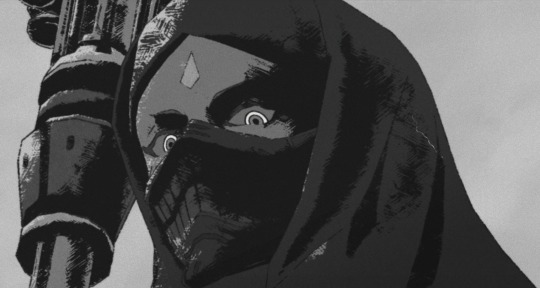

I hope I'm not the only one who had that association watching 1 episode "Star Wars: Visions". Sith Bandit Leader (Villain) & Shira Elan Colla Briea (Lumiya).
18 notes
·
View notes
Photo
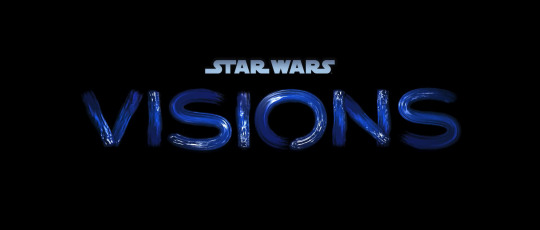
Star Wars: Visions (2021- )
5 notes
·
View notes
Photo

Star Wars: Visions premieres today
Star Wars: Visions, the new TV series from Kanako Shirasaki, is out today.
Reimagine the galaxy with Star Wars: Visions, an Original Series featuring stories from seven visionary Japanese anime studios.
2 notes
·
View notes
Photo

FanthaTracks.com https://fantha.news/22pod
Making Tracks: Star Wars: Visions Roundtable: With James Waugh and Kanako Shirasaki
Welcome to a special roundtable episode of Making Tracks as we join fellow sites and podcasts in putting questions to Star Wars: Visions Executive Producer James Waugh and Producer Kanako Shirasaki about this groundbreaking nine-episode anime show that has thrilled fans both new and old. You
Take The Link To Read The Full Article #starwars #FanthaTracks
0 notes
Text
0 notes
Text
What Star Wars: Visions Has in Common With Hayao Miyazaki and Studio Ghibli
https://ift.tt/39y46JS
The beauty of the natural world and its spiritual elements have long been popular subjects for anime, and in the new short film anthology Star Wars: Visions that translates to rich forests and bringing life to once barren ground. With its emphasis on how characters affect the environments around them, Visions touches on both the history of anime and an idea that has been present but muted in most Star Wars stories: that the evil of the Empire goes hand-in-hand with resource exploitation and greed.
Naturally, anime is an art style — developed in Japan and with a wide range of inspirations behind it — not a single genre. You can find anime films and TV shows espousing and glorifying a wide range of philosophies, from the green of the trees to the virtues of guns. But some of the most successful examples have included the former.
Hayao Miyazaki and Studio Ghibli, the director and studio behind perhaps the most well-known anime films in the west, make the association between the style and environmental messages clear. Princess Mononoke directly depicts a fight between the denizens of the forest and the humans who have been clearcutting it. My Neighbor Totoro romanticizes a countryside and forest filled with Shinto-inspired creatures as well as real-world shrines and practices. Other popular anime, like the Moribito series (based on the novels of the same name) or Mushishi, also focus on nature as a source of spirituality, if not always safety.
Star Wars, itself inspired in part by Japanese films, addresses this indirectly but thoroughly. While the heroes tend to be visually associated with earth tones, sacred places, and magical trees, the villains wear metal and stark colors. The heroes are the underdogs, after all: the villains have the technological upper hand, even if a well-placed missile can destroy a whole battle station.
This is especially obvious in Return of the Jedi, which un-subtly pits the ultra-sterile trappings of the Empire against the raucous Ewoks. While the Empire destroys planets, the Ewoks live in trees and forage from the land. In The Clone Wars, destroying the environment is associated with disaster, like when the Separatists turn their Defoliator on their enemies’ planets or when a mixed Republic and Dug project disturbs the Zillo Beast from its underground lair. The Mandalorian makes this clear in the season two episode “The Jedi,” itself heavily inspired by Japanese director Akira Kurosawa; the Empire’s presence seems to be draining the planet, leaving churned-up mud and dying trees around the town.
The Visions episode that does the most with this theme is “The Village Bride,” which presents a planet where people have a home-grown understanding of the Force. “Magina,” or the Force, is connected directly to the planet: “You can’t change the river’s flow by casting a stone, but live in harmony with nature, and you’ll change together,” one Jedi says. The visuals focus on the forest, on how it can be both beautiful and inhospitable to humans. “We are the sky, we are the forest, we are the river,” goes the chant the titular bride and groom perform.
The actual destruction of the world is mostly hidden — an explosion here, a flashback there. Unlike many of the other shorts in the series, the villains are not even reminiscent of the Empire. Instead, they’re bandits using reprogrammed Separatist droids.
Perhaps the most subtle expression of this theme in the episode is the opening scene, where the wanderer Valco activates what appears to be a lightsaber, then proves to be a sensor of some kind. While he’s capable of fighting, he’s also fighting in his own way with research and science.
“T0-B1” also shows that being a hero can mean tending the planet, not necessarily swinging a lightsaber — although the hero certainly does also swing a lightsaber. Inspired by his mentor’s death, the little droid T0-B1 tries to grow plants on the inhospitable desert world. (T0-B1 is a visual echo of Astro Boy, the hero from the 1952 manga, which was later adapted into one of the most successful and familiar anime franchises of all time.) The science is presented as wondrous and soft, and learning how to make the planet green again is the triumph that leads him to gain his lightsaber and become a Jedi Knight.
Of course, the episode also presents him with a convenient villain — he needs to have a martial victory as well as a life-bringing one. Getting to what Yoda said — war not making a person great — is still not quite possible on screen in a franchise built in part on the spectacle of lightsaber battles. But “bringing life back to this planet” is T0-B1’s mission, and his resolution at the end of the episode is that “helping planets…that’s what Jedi do.”
“The Ninth Jedi” evokes some of the industrialization presented as the enemy in other episodes, but doesn’t do as much with it. Throughout the series, we see that kyber crystals, the power source of a lightsaber, are nearly as prized, valuable, and flashy as the laser swords themselves. The process of mining kyber from asteroids in “The Ninth Jedi” is visually arresting, with cords shot into space from machines resembling oil rigs and dragged down to the planet in violent crashes.
The episode doesn’t have much to say about this: the kyber crystals are as noble in good hands as they are sinister in evil ones, with lightsaber colors switching to match each person’s ethical standing. Even so, it’s a cool look at one way to get ahold of this essential piece of Star Wars technology.
One of the best episodes in the series, “Lop and Ochō,” also works the pro-environment theme, both visually and in dialogue. It presents a marked contrast between the industrial Imperial base and the verdant planet around it. Even the hero Lop, a bunny-like alien, is more animalistic than the people around her. But the real insight in this episode comes from the story of why her adopted sister Ochō decides to join the Empire. She explains in a straightforward manner that she’s doing it to help her family: the “Imperial industry” that has “stripped and exploited” the planet will bring “growth and prosperity,” she says.
Ochō’s arguments for how the benefits of the alliance will help the family — money, presumably, and an ever-increasing flow of it — make sense. That’s what’s so honest (and frightening) about them. She wants the same thing Lop does — to keep the family safe — but wants to go about it in a different way. To her — and to the Imperial officer who has been conspiring with her — the family’s “idealism” is just getting in the way. “How are feelings supposed to save our family?” Ochō asks.
I won’t spoil the ending of this one, so suffice it to say the sisters’ clashing opinions are both tested. By the end of the episode, the visuals show primarily the stark metal of the Imperial base, with decorative trees reminding the viewer that the natural world is also part of the conversation. By combining the visual tropes of Star Wars and anime, Visions creates a strong message from both.
Read more
TV
Is Star Wars: Visions Canon? The Anime’s Timeline Explained
By John Saavedra
TV
Star Wars Visions: Who Is Ronin?
By Megan Crouse
Star Wars: Visions executive producer James Waugh and producer Kanako Shirasaki spoke to Den of Geek about this connection in an interview, saying the “unique cultural perspective” lends itself to this theme.
“It comes down to the point of the anthology really, which was a unique cultural perspective and a unique art form expressing Star Wars,” Waugh says. “So much of that type of storytelling [about nature] feels so at home with anime because it permeates a lot of the fiction that comes out of Japanese culture in general.”
But the focus on the environments of Star Wars came naturally, according to Waugh. It wasn’t a mandate.
“There was never a conscious moment where we said we were really leaning into the idea of should we do these stories or not. It was these creators had a vision, each one had a point of view and a story they wanted to tell, and those were the themes they were gravitating towards. And that resonated with Star Wars in the sense that they were powerful, resonant themes that felt a little mythic, and then it was really a matter of getting characters rendered in a way that they had to react to the situation and we had to care for them. But it was totally the byproduct of working with creators who have a very specific point of view and something to say.”
Shirasaki adds, “The creators are heavily influenced from Star Wars at the same time as the rich history of Japanese animation, and Miyazaki and other Japanese storytelling talking about nature and development and all the conflict between these two. So maybe these topics might feel closer to them to tell, and also in a Star Wars setting.”
cnx.cmd.push(function() { cnx({ playerId: "106e33c0-3911-473c-b599-b1426db57530", }).render("0270c398a82f44f49c23c16122516796"); });
Miyazaki is often quoted as one of the medium’s most powerful voices on environmentalism. In a 2009 interview, the legendary animator said that this idea needs to go beyond storytelling as well: “Whether we should do something about it or not is something that we need to think about in real life, rather than depicting it in a particular way in the stories on screen.”
Star Wars: Visions is streaming now on Disney+.
The post What Star Wars: Visions Has in Common With Hayao Miyazaki and Studio Ghibli appeared first on Den of Geek.
from Den of Geek https://ift.tt/2XPaR89
0 notes
Text
0 notes
Photo

Lucasfilm has unveiled the Key Art of "JOURNEY TO THE DARK HEAD" Directed by Hyeong Geun Park with Studio Mir.
Star War: Visions Volume 2 Streaming May 4 only on Disney+
#Star Wars#Star Wars: Visions#Star Wars Visions#Hyeong Geun Park#Studio Mir#Jacqui Lopez#James Waugh#Josh Rimes#Justin Leach#Kanako Shirasaki#George Lucas#Lucasfilm#Lucasfilm Entertaiment#Lucasfilm Ltd#LucasFilm Animation#Disney+#Disney Plus#Disney+ Originals#Disney Plus Originals#Disney+ Original Series#Disney Plus Original Series#Disney+ Original Animated Series#Disney Plus Original Animated Series
112 notes
·
View notes
Text
INTERVIEW: Star Wars Visions Producers on Letting Anime Creators Run Wild

Today marks the launch of Star Wars: Visions, an ambitious anthology project that enlists top talent and renowned studios from the anime industry and gives them the keys to the Falcon. Okay, no one's getting the keys to the Falcon per se, but while they weren't told to take the reins of established characters, studios ranging from TRIGGER (PROMARE) to Production I.G and beyond were given an immense amount of freedom to explore the types of Star Wars stories they've always wanted to tell.
You can see the results for yourself starting today on Disney+. We took an early look at all nine episodes—which run the gamut, telling tales of masterless Jedi, battling bands, and lots and lots of Kyber crystals—and then spoke to executive producer James Waugh and producer Kanako Shirasaki to break down what makes this project work.

The studio lineup is full of heavy hitters of the anime industry. I'd love to know more about how that selection was handled, and if you were reaching out to specific studios from the beginning.
James Waugh: We identified very quickly studios that we wanted to find ways to partner with. I mean, we've been a fan of so many of these studios; Production I.G, TRIGGER, on and on. Science SARU has been such a surprising influence of late, and we knew that we wanted to make sure that the anthology really showcased all the different styles of anime, and different types of creators telling stories in Japanese animation.
So we were very deliberate in selecting studios we were hoping to work with. We didn't know how it was gonna go, though. We didn't know who would be interested in Star Wars!
Turns out everyone.
James Waugh: Turns out, yeah.
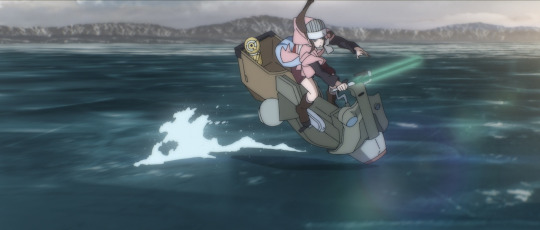
Were there any dream collaborations you can mention that didn't quite pan out for this particular project?
James Waugh: I don't think so.
Kanako Shirasaki: Yeah, I don't think so.
James Waugh: I think we were very fortunate that the studios we were interested in pursuing were interested in us, too. Suddenly, when we would take meetings with them, there was always a story about how Star Wars set them off on their journey of becoming world builders and animators and storytellers. So they were fans right from the start, and the feeling was mutual.
Kanako Shirasaki: Even the directors who didn't really talk about how much they love Star Wars, eventually they'd start talking about this and that, like little tiny episodes of their Star Wars chapter in their lifetime, so it's great to know how Star Wars influenced the lens of animators and creators.
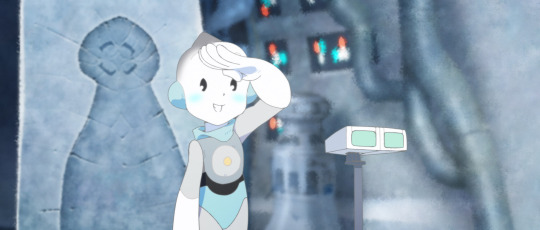
There's a lot of variety in these shorts. What was the story pitching process like as far as each episode is concerned?
James Waugh: We had a framework, a very kind of loose framework for what we wanted Star Wars: Visions to be, which was really a way to unlock timeline-focused development and allow for different creators to celebrate Star Wars through their unique lens and through a medium that, you know, is very specific and has a certain kind of vocabulary to it.
I think the only real rule we had with it was to render your own stories, your own characters. What we didn't want this to do was become like a "What If" show, which is great for Marvel, but that's not what we were trying to achieve here; it wasn't let's do a 'What if Luke Skywalker did this, or what if Darth Vader..." I love those comics, they're great, but that's not what the intention was. The intention was let's go to these creators and say, what amazing stories do you have to tell that take place in this massive galaxy... (laughs) That clearly a bazillion stories could take place in. That's really the way it works.
Then Kanako, you guys were directly engaged with the studios for the process.
Kanako Shirasaki: Yeah, and I think it worked very well, too, otherwise we couldn't have this diversity and stories from seven different studios and nine different directors. So it really worked well, and each director wanted to tell their visions in the anthology, too, so I think the framework worked nicely.
Speaking of that framework, I noticed a lot of the stories—I don't know how intentional this is—feel like they have a thematic throughline, specifically because there are a lot of Kyber crystals here. You don't really see the inner functionality of a lightsaber shown or discussed that much throughout the main saga. Was it a coincidence that a lot of the creators wanted to tackle this subject?
James Waugh: It really was. We had the same reaction, and we've been hearing that from a lot of other interviewers saying they noticed that throughline. And no, we were very much empowering them to tell the stories they wanted to tell, and I think when you look at Star Wars elements that look like they're fun to play with, and to be used in a dramatic way, I think lightsabers, Kyber crystals, these things are something creators are drawn to.
Kanako Shirasaki: Also Japanese anime, or Japanese storytelling in general, when you have some props, you want to show how they work. How the machines transform into different shapes and so on. Maybe that influenced the creators to show how you put the Kyber crystals in the lightsaber or show other things using props.
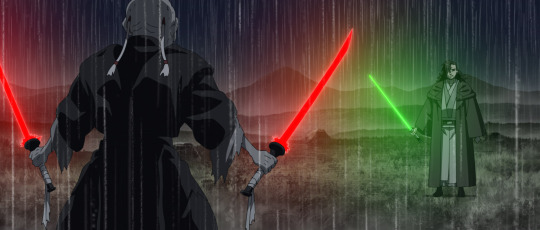
It sounded like there was a lot of freedom overall, with directors like Takanobu Mizuno (The Duel) asking "can you really do that with Star Wars?" Other than main characters that were off limits, were there any other concepts you had to turn away, or say ‘no, that's not Star Wars,’ or was it really kind of just letting them loose?
James Waugh: I think it was letting them loose. The process was in dialogue, so it wasn't that we sent them off with a framework and there wasn't a conversation and they kind of handed it back. We work at our best when we can have conversations about the values of Star Wars storytelling, or specifically, how can we make the story you're trying to tell more authentic to Star Wars? 'Hey, do you know that we have these things in the universe?' It was kind of an ongoing dialogue with the intention of facilitating their stories.
But yeah, there were definitely those moments of, like, 'are you guys really letting us do this?' (laughs) Yes, yes we are. That's the point! We want to figure this out, we want to make it work. As long as the stories have heart and soul I think we were happy.
Kanako Shirasaki: It was like, had anyone ever considered attaching two Star Destroyers into one? No, but…
That was a very TRIGGER thing to do.
Kanako Shirasaki: (laughs) Yeah.
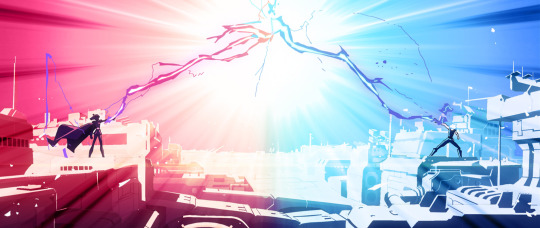
Anime has found a lot of success in these anthology-type stores, from The Animatrix to Batman: Gotham Knight and now Star Wars: Visions. What do you think it is about anime that makes it ideal for this style of storytelling?
Kanako Shirasaki: The first thing is, there are so many animators working in Japan who are trying to explore their own style. Studios trying to find their own style. I think there's already huge diversity in there, and maybe that really appeals to different creators around the world to want to explore and showcase these different art forms and styles of storytelling.
James Waugh: We knew very quickly that we wanted to show the breadth of the amazing different voices that are coming out of Japan. We didn't want to just be one note, in that way. So yeah, you're right, it does always seem to work with [those anthologies], but I mean it's purely because we wanted to see different people's perspective on Star Wars, and see the world-building that they would bring given the opportunity.
And now you can work a double Star Destroyer into the next movie.
James Waugh: Yeah, exactly. Someone's gonna try that, someone's gonna be inspired.
Star Wars: Visions launches today on Disney+.

-------
Joseph Luster is the Games and Web editor at Otaku USA Magazine. You can read his comics at subhumanzoids. Follow him on Twitter @Moldilox.
By: Joseph Luster
0 notes
Text
Star Wars: Visions Reaction & Interview with James Waugh & Kanako Shirasaki
Star Wars: Visions is HERE! Caitlin and Charlotte react to the newest anime-style series in this episode. First, we sit down with Executive Producer James Waugh and Producer Kanako Shirasaki to discuss the series as a whole and the creation process.
Star Wars: Visions is HERE! Caitlin and Charlotte react to the newest anime-style series in this episode. First, we sit down with Executive Producer James Waugh and Producer Kanako Shirasaki to discuss the series as a whole and the creation process. We also ask them an abbreviated version of our Star Wars dinner question. Then, we share our initial reactions to the show and go through each short.…

View On WordPress
#animation#interview#interviews#lucasfilm#Podcasts#star wars#star wars anime#star wars interview podcast#star wars podcast#star wars tv#star wars visions
0 notes
Text
Sneak Peek of Lucasfilm's Star Wars: Visions Coming to Anime Expo Lite in July 2021
Sneak Peek of Lucasfilm’s Star Wars: Visions Coming to Anime Expo Lite in July 2021
Anime Expo has announced that Lucasfilm will bring a galaxy far, far away to Anime Expo Lite in July 2021 with Star Wars: Visions – Sneak Preview.
Join host and pop culture maven Chastity Vicencio and Lucasfilm’s Jacqui Lopez (Executive Producer), James Waugh (Executive Producer), Josh Rimes (Executive Producer), and Qubic Pictures’ Justin Leach (Co-Executive Producer) and Kanako Shirasaki…

View On WordPress
0 notes
Photo

FanthaTracks.com https://www.fanthatracks.com/news/film-music-tv/meet-the-droids-of-star-wars-visions/
Meet the droids of Star Wars: Visions
A week today sees the arrival of Star Wars: Visions on Disney Plus and after meeting the heroes and villains of the series StarWars.com chat with Visions producer Kanako Shirasaki to look at the nuts and bolts of the show, the droids. Star Wars wouldn’t be the same without droids. From Artoo t
Take The Link To Read The Full Article #starwars #FanthaTracks
0 notes
Text
0 notes
Text
How the Best Star Wars Visions Episodes Subvert the Story of Luke and Leia
https://ift.tt/39y46JS
This Star Wars: Visions article contains spoilers.
At the center of Star Wars sit the twins. A cornerstone of the Original Trilogy, Luke and Leia are also the template for some of the shorts in the Star Wars: Visions anime anthology. The episode “The Twins” takes this concept the most literally, presenting twins born for a specific purpose, whether or not they fulfill it. But it’s another episode, “Lop and Ochō,” which truly takes the “Force siblings” concept to another level. It’s similar enough to be recognizably Star Wars, while also breaking new ground.
Luke and Leia, the brotherly bond between Anakin and Obi-Wan, and Jaina and Jacen Solo in the old Legends canon — Star Wars‘ Skywalker family drama is built around stories about blood or adopted siblings. The first major difference in “Lop and Ochō” is that it’s a story about sisters. But that’s not the only reason it stands out.
Like the other anime shorts, which run from 10-20 minutes each, it does a lot with very little. Lop is rescued by Ochō and her father from a life on the streets of Tao. She was brought to their planet as a slave by the Empire, and her knowledge of its oppression is tested years later when she’s forced to choose a side. As the presumed heir of the family, Ochō believes the Empire can help their planet prosper through increased industrialization. But their father isn’t so sure, and is concerned about how the Empire’s plan will erase the planet’s natural resources and beauty. In the end, Lop chooses nature over industry, and the clash with Ochō is a compelling drama (with a cool lightsaber duel featuring an ancient “sword” that is a family heirloom). Unlike the tale of Luke and Leia in the Original Trilogy, it has a sad ending.
Stream your Star Wars favorites right here!
In “Lop and Ochō,” the stakes are both large and small, the character interactions tied to both the individual people and the larger themes. Ochō’s reasoning for joining the Empire comes from a genuine place of compassion for her family, but is twisted by the perception that greed is the only way to achieve safety and prosperity. As well as a fight between two sisters, it’s also a fight between callous “practicality” and only-somewhat-effective idealism. Meanwhile, Lop, the adopted child, becomes her father’s true heir, earning the right to wield the family’s most prized possession.
Like many of the episodes in the anthology, the lightsaber plays a central role. Lop’s father says it directly: “This ancient weapon represents the bond between parent and child.” Along with the idea of a lightsaber as an ancestral sword — and using both a lightsaber and an ancestral sword — being extremely cool, this also directly revisits a theme that has been gestured at throughout Star Wars. Look at the associations Luke, Obi-Wan, and Rey all have with Anakin’s weapon. The lightsaber doesn’t have any power of its own, but it is a reminder of the other people who wielded it and how they’re all connected, as dysfunctional as their Force family may be.
“I would say with ‘Lop and Ochō,’ that one is more of a found family story and the tension and dynamics of different perspectives in family. Which feels very Star Wars to me,” executive producer James Waugh tells Den of Geek.
Read more
TV
Is Star Wars: Visions Canon? The Anime’s Timeline Explained
By John Saavedra
Games
What Quantic Dream’s Star Wars Game Means for the Controversial Studio
By Aaron Greenbaum
With a heart-wrenching “I am your father,” Darth Vader’s revelation to Luke became one of the most famous (and misquoted) movie lines in history. In “Lop and Ochō,” it’s used in a different way. Not just a funny reference, Lop’s father’s repetition of the line drives home the idea that although they are different species, they are true family and willing to risk their lives for each other. Instead of a horrible revelation, it’s a comforting one. Placing the line in such a different emotional context is what makes it more than an easter egg.
cnx.cmd.push(function() { cnx({ playerId: "106e33c0-3911-473c-b599-b1426db57530", }).render("0270c398a82f44f49c23c16122516796"); });
In regards to stories about family creating the backbone of the franchise (and the subversion thereof), Waugh says that “the celebratory nature of Visions in general, of taking elements that meant something to you from the Star Wars galaxy and finding your own way to express that, really unlocked [that subversion].”
“The Luke-Leia twins story is so fundamental to your first steps to learning about the galaxy and understanding Star Wars,” he continues. “So to take something like ‘The Twins,’ what’s beautiful about that short to me is it feels like it’s such a product of remix culture. It feels like it is remixing Star Wars ideas in a really fresh, unique way. Taking known ideas and then subverting them, and putting them together in a really unique collage that all the ideas are instantly recognizable, but they’re done differently.”
In “The Twins,” we meet Karre and Am, twins who have been raised as children of the dark side by the Imperial remnant, who hope they’ll one day grow up to rule the galaxy as one. But when Karre begins to question the path that’s been set out for him, it causes a rift with Am that plays out in one of the wildest action sequences in Star Wars history. Despite being raised as a “chosen one,” Karre chooses something different, which producer Kanako Shirasaki pinpoints as the message of the episode.
“You can find the message from the creators, [Trigger] really wanted to tell the younger audience or younger generation that you pursue what you want to do, like Karre he was coming from a very specific background and becoming kind of nobody. You feel very moved by the story because there’s a very strong message from the creators you can find on top of the Star Wars element and Star Wars storytelling.”
It’s likely no accident that “The Twins” and “Lop and Ochō” feel more open-ended than some of the other shorts, and that, too, adds to their appeal. They aren’t wrapped up neatly, the conflicts between these siblings are left in a messy place. Like “The Duel,” which became the inspiration for a full-length novel out in October, these two shorts feel like they could expand outward into whole new sagas. Sometimes, when it comes to Star Wars, evoking that feeling is the real sign of success.
The post How the Best Star Wars Visions Episodes Subvert the Story of Luke and Leia appeared first on Den of Geek.
from Den of Geek https://ift.tt/2XM96b2
1 note
·
View note